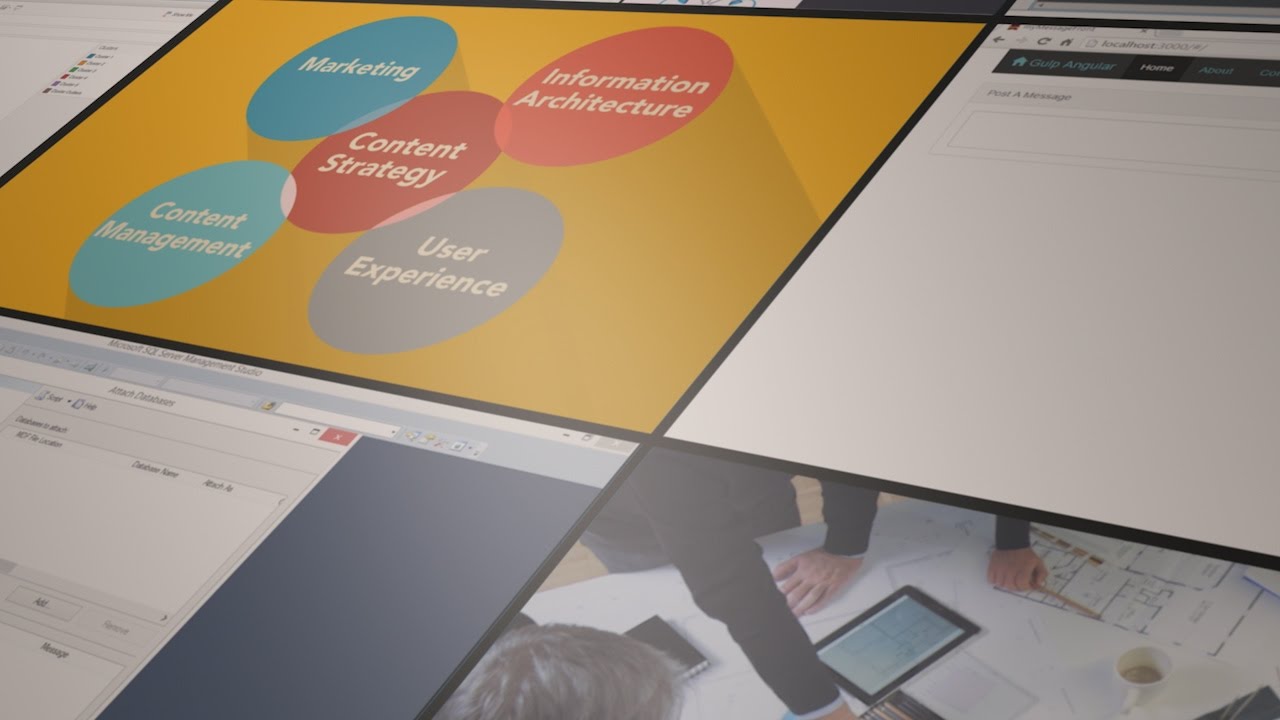Top 10 essential leadership skills for managers for 2023
The top 10 in-demand job skills for 2025 list reported by World Economic Forum (WEF) is outdated.
There are new job skills employers are looking for and we present them in this article.
The world is changing at a breakneck pace. New technologies are disrupting industries, different generations with different values are working together in the same office and people are using new ways to communicate and express themselves.
The workplace is not the same as it was two years ago, let alone five or ten. Leadership and people management are today at a crossroads (see our piece on quiet quitting) and the skills employers are looking for in new hires are changing almost every year.
That’s why we believe the list of top 10 in-demand job skills for 2025 that the World Economic Forum published two years ago needs updating.
The Top 10 in-demand job Skills for 2025 Before the Great Resignation
Every year, the World Economic Forum publishes the Future of Jobs report which showcases various highly useful statistics and data including the top skills required for jobs five years in the future.
Here are the WEF’s recommendations for 2025:
- Analytical thinking and innovation
- Active learning and learning strategies
- Complex problem solving
- Critical thinking and analysis
- Creativity, originality and initiative
- Leadership and social influence
- Technology use, monitoring and control
- Technology design and programming
- Resilience, stress tolerance and flexibility
- Reasoning, problem-solving and ideation
The problem with the latest report of the forum is that it was published before the Great Resignation and its impact on the global workforce, which began in early 2021. It’s 2022 and the business environment is struggling with a new trend: Quiet Quitting.
Both the Great Resignation and Quiet Quitting are symptoms of the same problem: lack of good leadership.
It’s not that before the pandemic employees didn’t have leadership. They had. But in today’s world, a world of work-from-home, work-from-everywhere, with a healthier work-life balance, a new type of leadership is required.
The type of leadership Future of Work Strategy Expert @London Business School and BRAND MINDS 2023 speaker Lynda Gratton writes about in her article for Harvard Business Review, Managers can’t do it all.
The Top 10 essential leadership skills for 2023 after the Great Resignation + Quiet Quitting, for Managers
What are employees looking for in their job roles?
Values alignment. Millennials and Generation Z are now the largest segments in the workplace. What countless surveys and reports have found was that the members of both generations are seeking jobs in mission-driven companies whose values align with their own. When companies fail to live up to their own values and the employees’ expectations, the employees will take it to the street with protests and call-outs. And I give just two examples: the Google walkouts in 2018, and more recently, the pressure employees and customers have put on brands still doing business in Russia.
Flexible work schedules. Millennials with families expect their jobs to provide them with a healthy work-life balance where they can spend quality time with their children and spouses. Nearly 1 in 5 Gen Z’ers want to run their own business, and the vast majority of them have one pet hobby they would like to nurture and manage so flexible work schedules are important for them too.
Professional Growth & Development Opportunities. No one wants to do the same job for years and then retire. Employees want to grow as professionals and advance in their careers. They expect employers to provide them with on-site training or offer a training allowance they can use to develop their skills further. According to LinkedIn statistics, Gen Z learners watched 50% more hours of educational content on LinkedIn. Improve my skills to improve your company.
Opinion heard and Initiative welcomed. There is no bigger satisfaction than working in an environment where your opinion is heard, your input is valued and you are expected and encouraged to improve how the company is doing email marketing, or customer service or product design. When you see how your work contributes to the organization’s larger purpose, it’s the best feeling.
What skills are managers expected to acquire or develop?
Performance development. Managers need to shift from performance management to performance development. It’s not enough to monitor and assess performance, they need to support employees in developing their skills which leads to increased performance.
Communication, Empathy and emotional support. Gallup recommends that managers have one meaningful conversation per week with each team member — 15-30 minutes. They found this helps employees reduce disengagement and burnout.
S-curve employee learning management. The S learning curve strategy is a great framework to build a winning team and a highly efficient tool for employee development. This framework is the essence of professional development for employees at every stage of their careers. The manager identifies any skills gap the employee needs to close.
Diversity and inclusion management. Generation Z is the most diverse generation we have ever seen. Managing and nurturing the development of these workers needs to align with the company’s business goals and the development needs of other generations working together in the same office.
Top 10 essential leadership skills for managers for 2023, BRAND MINDS edition
- Performance development
- Peer-to-peer and team coaching
- S-learning curve management
- Communication, Empathy and emotional support
- Employee growth culture
- Engagement and retaining
- Retraining and career coaching
- Diversity and inclusion support
- Skills gap anticipation
- Agility

What is the McKinsey 7S framework for successful management
What is the McKinsey 7S model explained briefly?
The McKinsey 7S model is a business framework to address the essential role of coordination, rather than structure, in organizational effectiveness.
This business framework states that the organization is not the structure and is a model of organizational change.
Whenever organizations need to adapt to new business environments the hierarchy of the organization (who is tasked with what, who reports to whom, who needs approval from whom etc) is irrelevant.
The organization goes beyond its structure. It’s a complex ecosystem comprised of seven factors which interact with each other and influence an organization’s ability to change.
What are the 7S of McKinsey’s framework?
The seven factors of the McKinsey 7S framework are STYLE, SKILLS, SYSTEMS, STRUCTURE, STAFF, STRATEGY and SHARED VALUES.
For an organization to change successfully, it needs to approach every S factor.
The framework shows that every factor interacts with the other six. The organization cannot make significant progress towards change by focusing on one area and ignoring the rest. The organization must tackle its approach to change by moving into all seven S factors.
Let’s explain every S factor of the McKinsey model.
McKinsey 7S framework – Style
By style, the authors of the McKinsey 7S framework mean culture.
What is organizational culture and why is it essential to an organization’s success?
The culture of a company or organization is a set of shared beliefs, values and practices. The organization’s CEO, founder or top management are responsible for outlining the organization’s culture and hiring the right people that will maintain it.
For many organizations, culture drives success.
Neflix’s No rules policy is at the heart of its culture. The famous entertainment company nurtures employee freedom and encourages responsibility.
At UiPath, the efforts of top management are focused on providing employees with psychological safety beyond anything else.
At Amazon, employees are encouraged to think like an owner.
In every one of these organizations, success is synonymous with innovation and culture is the medium that facilitates innovation.
McKinsey 7S framework – Skills
Skills refers to organizational skills as well as individual skills.
What does your organization do best? What is your organization known for? What are its strengths? Is it creativity and design? Is it distribution or sales?
BMW is known for its innovative engineering and fast engines.
Coca-Cola has one of the most successful distribution systems in the world.
Louis Vuitton is renowned worldwide for its high-quality luxury handmade handbags.
The skills factor is also important to reveal skills gaps in the organization. With the business environment being disrupted by new technologies, organizations face increasing needs to fill skills gaps. They can either hire highly-specialized talent or upskill their current employees.
Another question that organizations must aks is do we need to improve hard skills or soft skills?
It’s an important question because the needs of an organization may shift every few years to follow changes taking place in our society. Read about the top 5 most in-demand soft skills in 2021.
Marketing is an industry where learning never stops. The professional growth and career advancement of a marketer now hinge on his or her desire and ability to learn new things. Read 4 skills that every successful marketer should acquire in 2021.
McKinsey 7S framework – Systems
By systems, the McKinsey framework means all the procedures, formal and informal, that make the organization go day by day.
How does the organization get things done?
Here are some of the main systems that an organization operates to achieve its goals:
- IT
- Financial
- Hiring
- Customer service
- Product development and delivery
- Information management
- Internal communication
- Planning
- Employee evaluation
There is a significant difference between how organizations were doing customer service in the 1980s and how it’s done today.
Organizations nowadays have a slew of digital tools they can use to solve the customer’s requests efficiently – Chatbots, Whatsapp, social channels etc.
McKinsey 7S framework – Structure
The structure factor of the McKinsey 7S framework refers to the way the organization is structured.
Is it centralized, decentralized or a hybrid?
Historically, the first organizations were centralized with one man, ie the founder or the CEO, taking every decision.
Apple under Steve Jobs is an example of a centralized organization where the founder made decisions regarding design, functionality, features etc.
The centralized organization can be very effective and ensures that the founder’s vision is carried out throughout the company and reflected in the product. But when the organization scales up, this type of organizational structure reveals its flaws. The organization is slow to make decisions and adapt to changing circumstances.
Starting with the 1950s, decentralization became the focus of organizations which had achieved a certain level of size and complexity.
Within these organizations, the number of employees had increased and subsequently the number of interactions required to make things work. The size and complexity of these organizations had become a burden and they were in danger of breaking down.
Decentralization was the solution. A decentralized organization is able to make decisions fast and adapt swiftly to its environment.
Other organizational structures are the line structure, the functional structure, the line-and-staff structure, the project-based structure, the matrix structure etc.
McKinsey 7S framework – Staff
Staff refers to the people in the organization and looks into the ways the organization nurtures and develops its employees.
How does the organization motivate its employees? What strategy does the organization employ to hire for diversity? Once diversity achieved, does the organization have an inclusion strategy?
Workforce diversity is a competitive advantage. A team which includes members of different generations, background cultures, interests and talents provides the organization with different insights and perspectives and drives creativity.
McKinsey 7S framework – Strategy
Strategy is defined as the actions a company plans to take to achieve its business objectives.
The plan outlines what (resources), how (specific tools, activities, platforms etc) and why (the reasons behind your choice of a specific resource or tool) the company will use to achieve its goals.
The strategy’s secondary goal is to define how the organization differentiates itself from the competition and create unique value. Learn how to create a strategic plan in 5 steps.
A successful organization must be able to change its strategy to match the current business environment. When organizations fail to see the need to change, they miss out on the opportunity to adapt and survive.
Nokia’s culture of status, shared fear and temporal myopia made the company vulnerable to competitive forces and prevented it to adapt its strategy (more on this in Why did Nokia fail?).
Microsoft, on the other hand, learned from Nokia’s mistakes (Microsoft acquired Nokia in 2014). When Satya Nadella became CEO, his main leadership challenge was to change the company’s culture. In his opinion, “The C in CEO stands for Culture”.
McKinsey 7S framework – Shared values
What is the organization trying to achieve? What is the organization’s social mission? How does the organization respond to the question Why?
In 2009, best-selling author Simon Sinek defined the concept of Why as the purpose, cause or belief that drives every one of us, leaders and employees alike.
Google’s mission is to organize the world’s information and make it universally accessible and useful.
TikTok’s mission is to inspire creativity and bring joy.
BRAND MINDS’ mission is to unite the business world by providing world-changers with the ultimate business experience.
Having a clear mission statement and delivering on it is paramount for a company’s reputation and bottom line. Consumers and employees expect organizations to stand for something. When they fail to deliver, organizations are met with protests and call-outs. For some organizations, change is now coming from employees putting pressure on the management, not the other way around.
Join the Conversation
We’d love to hear what you have to say.
Get in touch with us on our LinkedIn Page, Facebook Page, Twitter or TikTok.
10 Skills one needs in strategic thinking
- Think critically
“Instead of jumping directly to decisions or solutions for problems, the critical thinking helps you to make decisions through objective evaluation and analysis of problems and ideas. This can be achieved through a thinking methodology that goes through three phases; observing the current situation, ask questions to clearly define the problem, and find solutions based on the answers to the questions. This thinking methodology helps to build a coherent strategic thinking approach by addressing the different aspects of the problem through addressing the situation from different perspectives,” writes Designorate.
2. Being analytical
Always questioning and thinking in-depth helps you create the best strategy for the brand, finding the best insights possible and knowing your target better. Moreover, the people working in strategic planning need to be able to analyze and evaluate a company’s business plan. They have to be skilled in market analysis, feasibility analysis, and more. Only through an analytical eye can strategic planners decide what steps need to be taken by a company.
3. Attention to details & 4. Good observation

These two skills go hand-in-hand. To be able to make a good assessment of the situation and analyse the facts,one needs to be able to pay really good attention to details and,therefore, be a good observer. Knowing what happens on the market with other brands,local and international, but also what the competition you aspire at does,it essential in your brand positioning and finding your perfect niche and communication path.
It’s important to know the big picture but, at the same time, to be able and find what differentiates you and makes your brand unique.
5. Being open to suggestions and discussions
Nobody on this earth is the holder of the forever and perfect truth, all the time. Sometimes, being to close to a certain situation or business can make one be too subjective and not see or not wanting to see some important aspects can be essential to the business’ well-being. One needs a broader understanding of the situation from different perspectives. This involves being open-minded and willing to listen to other opinions, even if they don’t share the same ideas as you. Therefore, the success can be reached by opening the dialog between all the stakeholders to share their ideas about the project during the meetings.
6. Decision making

Being able to make the final decision, especially when it’s a hard one, it’s essential in a brand/business’ life. The right person knows when to draw the line and decide.
7. Flexibility
The people having this skill recognize the opportunity to revise their plans as needed. They have an inner ability to be proactive and anticipate change, rather than being reactive to changes after they occur. They are not afraid to take chances and work over-time,when needed. Instead of being stuck in an idea or strategy that is simply not working or follow the plan as established without looking around, they know how to seize the opportunity.
8. Being a motivational factor for the team
9. Being perceptive
“Great strategic thinkers will listen, hear and understand what is said and will read and observe whatever they can so that they will have very helpful and strategic information to guide them. Strategic thinkers often have those \”Ah Ha\” experiences while on vacation, walking, sitting and relaxing or during many other activities because they see or hear something that resonates and because they are so aware and perceptive,” wrote Robert Bradford for cssp.com.
10. Having vision
One gets nowhere without the power to see ahead,to have a vision for the brand/ the business/ the company.
LinkedIn Learning and How is helping your business
LinkedIn Learning was launched in 2016 in San Francisco, about a year and a half after LinkedIn acquired online learning site Lynda.com for $1.5 billion. A large part of LinkedIn Learning is based on Lynda content, and went live, accordingly to Tech Crunch, with around 9,000 courses on offer. Subjects taught through the service include business, technology and creative topics, with courses running from programming skills to writing and accounting.
“With more than 450 million member profiles and billions of engagements, we have a unique view of how jobs, industries, organizations and skills evolve over time. From this, we can identify the skills you need and deliver expert-led courses to help you obtain those skills. We’re taking the guesswork out of learning. The pressure on individuals and organizations to adapt to change has never been greater. The skills that got you to where you are today are not the skills to prepare you for tomorrow. In fact, the shelf-life of skills is less than five years, and many of today’s fastest growing job categories didn’t even exist five years ago,”declared LinkedIn representatives at the time of the launch.
Managers can customize multi-course “learning paths” for employees, and examine analytics to measure employee progress. The courses (divided into business, technology and creative categories) are available free with a LinkedIn Premium subscription for individuals and there is also an enterprise version. The platform offers solutions for business, higher education, government agencies and libraries.
And, as techrepublic.com is pointing out, LinkedIn Learning differs from other online training options because managers can customize multi-course “learning paths” for employees, and examine analytics to measure employee progress.
Moreover, the platform has a blog attached to it that will offer you even more pieces of information and interesting articles.
According to “Learning at the Speed of Business”, McKinsey & Company, May 2016, How the Digital Skills Gap is Killing Productivity IBM, quoted by LinkedIn, organizations that embrace a culture of learning can boost employee productivity by up to 50%.
The Job of the Future

The future. The perfect job. All of these terms mean different things to different people. What makes us happy may not make somebody else. Forseeing into the future and finding predictable trends is a job that requires lots of research and inspiration, but it will never be 100 percent accurate.
If for some people the perfect job might be travelling and blogging about it, for others may mean sitting in front of a desktop and writing algorithms. If for some the job of the future may be totally related to the new technologies, for others may represent going back to their roots and the nature, following the naturist trend.
For example in Singapore, according to vulcanpost.com, there are three mismatches in today’s society that negatively impacts the employability and job search process for Singaporeans: mismatch of skills, of jobs and of expectations. Due to the lack of publicly available information, job seekers sometimes have a skewed impression of what jobs are up for grabs, and where they can be found. This in turn results in a surplus of jobs in certain industries while other sectors, such as security, suffer from a crippling lack of manpower. According to the Acting Minister of Education, Ong Ye Kung, there will be a job boom in the engineering and tech sectors of more than 30, 000 positions. And that, while at the same time, there are countries where the demand for these people is huge and rising.
Moreover, we have to take in account the fact that some jobs and titles didn’t exist some years ago, leaving the possibility for the same thing to happen in the future. In other words said, nobody knows what new jobs and positions will appear in 20-30 years’ time from now.
What is important to realize is that any job you would forsee for yourself, in order to make sure you do have a future, you must poses a set of skills that will help you navigate through the tough climate and find the right spot for you, even this one may change during the years. In our opinion, those qualities would require someone to:
- Be flexible
- Stay curious
- Be creative
- Be a different type of leader
- Have great communication skills
- Try to expand your boundaries
- Experiment as much as possible
- Know Himself / Herself
- Don’t be afraid to ask
- Build networks
- Keep the ego in check
- Be present and active
- Keep an eye out for everything new



